Waryong Recreational Forest (와룡자연휴양림)
.0M 2024-04-07
362, Biryong-ro, Jangsu-gun, Jeonbuk-do
+82-63-350-2477
Waryong Recreational Forest opened in June 1996 and serves as a family-friendly vacation destination to interact with nature. The park can accept up to 1,200 visitors per day. It also has a camping site as well as lodging facilities for both individual and group visitors. Children can learn about nature and the ecosystem through a variety of programs as well as enjoy forest bathing.
Jinan Baegundonggyegok Valley (백운동계곡(진안))
4.5Km 2024-04-07
Baegam-ri, Baegun-myeon, Jinan-gun, Jeonbuk-do
Baegundonggyegok Valley is between Deoktaesan Mountain and Seongaksan Mountain. The water in the valley flows into the Seomjingang River, and there are many small waterfalls and wide rocky areas. The water is abundant, and the waterfalls are cool. The sound of the waterfalls in the dense forest is enjoyable to listen to, and it is famous for its scenery that makes visitors feel like they are in paradise.
Red Food Festival (장수 한우랑 사과랑 축제)
5.5Km 2025-07-11
393 Hannuri-ro, Jangsu-eup, Jangsu-gun, Jeonbuk-do
+82-63-350-2355
The Red Food Festival celebrates the famous agricultural products of Jangsu, such as Hanu beef, apples, tomatoes, and omija, all themed around the color red. With the slogan “Falling for the Color, Savoring the Taste,” the festival features red agricultural products as the main attractions. The event includes food-related experiences, various performances, apple harvesting experiences, and the Hanu Bale Carrying Contest.
Nongae Shrine (Uiamsa Shrine) (논개사당(의암사))
5.6Km 2024-04-07
393, Hannuri-ro, Jangsu-gun, Jeonbuk-do
+82-63-350-2326
Uiamsa Shrine was built to the memory of Chu Nongae, who sacrificed her life during the Imjin War (Japanese Invasion of Korea). In 1846, the Nongae-saeng-jang-hyang-su-myeong-bi monument was put up in praise of Nongae’s patriotism. In 1955, a shrine was built and named Uiamsa, which was then moved to the current location in 1974. Within the precincts of the shrine are a memorial stone, the portrait of Nongae by artist Kim Eun-ho, and three gates Woesammun, Naesammun and Chunguimun erected one after another. At the memorial hall, the existing possessions of Nongae and her husband General Choi Gyeong-hoe are on display. The annual Nongae Festival takes places on September 3rd by the lunar calendar, during which memorial services and cultural events are held to commemorate Nongae.
Jangansan County Park (장안산군립공원)
8.4Km 2025-08-18
Jangan-ri, Jangsu-gun, Jeonbuk-do
+82-63-350-2445
Situated in Jangsu-gun in Jeollabuk-do, Jangansan Mountain (alt. 1,237 m) was officially designated a county park in 1986. Deoksan Valley Stream, which originates in the southwestern part of Jangansan Mountain and flows into Yongnimcheon Stream, is famous for the Deoksanyongso Waterfall Basins and the 20 or so large rocks that dot its banks. The sprawling fields of reeds along the East Ridge are also a major draw, undulating like waves of gold in the crisp autumn wind. In particular, the east hiking path on Jangansan Mountain is lined with a wide field of silver grass making it popular among hikers.
Eunsusa Temple (은수사)
10.5Km 2024-04-07
406, Maisannam-ro, Jinan-gun, Jeonbuk-do
+82-63-433-2502
The temple located upon Maisan Mountain was called Sangwonsa Temple during the early Joseon dynasty and was later known as Jeongmyeongam Hermitage. According to the Korean Language Society, the temple began to be called Eunsusa (meaning ‘Silver Water Temple’) after King Taejo (the founder of the Joseon dynasty) visited the temple and remarked that the water flowing nearby was as clean and smooth as pure silver.
The temple is home to the largest known Beopgo (Buddhist drum used for rituals), which was produced in 1982. A stone sculpture and a statue of Granny Samsin (a goddess that looks after babies’ births and keeps them healthy) also stand at the temple. However, the temple’s most treasured assets are its two Natural Monuments: Emerald Gaiety (a climbing vine, Natural Monument No. 380) and the Cheongsil Pear Tree (Natural Monument No. 386). Reverse icicles, though found all over the mountainsides, are most readily and abundantly found in the Eunsusa Temple area.
Tapsa Temple (마이산 탑사)
10.6Km 2025-01-08
367, Maisannam-ro, Maryeong-myeon, Jinan-gun, Jeonbuk-do
+82-63-433-0012
Tapsa Temple is famous for its over 80 stone pagodas. Each pagoda has a name, meaning and role. The pagodas are made of natural stone. They range in x_height from 1 meter to 13.5 meters and in shape from conical to straight. Two twin pagodas behind Daeungjeonhall are the tallest, standing three times the x_height of an average adult.
Maisan Hwaeomgul Cave (마이산 화엄굴)
10.6Km 2025-01-10
367, Maisannam-ro, Jinan-gun, Jeonbuk-do
+82-63-430-8751
Maisan Mountain has two major peaks made of sedimentary rocks; these peaks are said to be ‘couple peaks’ and cannot be found anywhere else. Sut Maibong (alt. 667 meters) is said to be the male peak while the slightly larger Am Maibong (alt. 673 meters) is deemed the female peak. In the early Joseon period the mountain was named ‘Sokgeumsan,’ but began to be called ‘Maisan’ after the 12th year of King Taejong, who commented that the two peaks resembled horse ears (‘maisan’ meaning ‘horse ears’). All along Maisan Mountain, visitors will find small crater-like rock cavities that are formed by prolonged weathering. These unique geological features, called ‘tafoni,’ are of great academic value.
Inside Hwaeomgul Cave, visitors can observe medicinal water that flows up from underground all throughout the year. It is widely believed that once you drink the water, especially on the days of the Spring and Autumn Equinox, you will soon have a son and be blessed by the mountain spirit. Even today, many women who have difficulty conceiving visit the mountain to pray to the mountain spirits for their heart’s desire—the gift of a child. The region in which Maisan is located is the birthplace of many talented people and national heroes, which some say is proof of the blessings of the mountain and its extremely powerful spirit.
Maisan Mountain Tafoni Terrain (마이산 타포니지형)
10.6Km 2024-04-07
255 Maisan-ro, Jinan-eup, Jinan-gun, Jeonbuk-do
Tafoni terrain refer to clusters of small caves resembling bombarded peaks. On the southern slope of Ammaibong Peak in Maisan Mountain, various-shaped honeycomb caves are widely spread out. These formations are believed to have been formed during the 4th Ice Age and subsequently shaped by frost action. Such caves are commonly found along coastlines.
Banghwadong Recreational Forest (방화동 자연휴양림,가족휴가촌)
10.9Km 2024-04-07
778, Banghwadong-ro, Jangsu-gun, Jeonbuk-do
+82-63-350-2474
Banghwadong Recreational Forest is located at the foot of Jangansan Mountain. The mountain trail from Deoksanyongso Pond leading to Banghwadonggyegok Valley features nature learning centers and adventure games facilities. The clean valley is lined with oddly shaped cliffs, shrubs and trees, which all combine into a splendid view. The forest is situated at a highland more than 500 meters above sea level. It is surrounded by mountains that are over a thousand meters above sea level, so the temperature is low and the water at the valley is cool even in the summer.
There are log cabins, group accommodation facilities, and training halls by the valley to accommodate group visits, conferences, gatherings and seminars. The recreational forest also operates Banghwadong Family Vacation Village for family visitors, equipped with accommodation facilities, various camping sites, and a wood carving experience center.

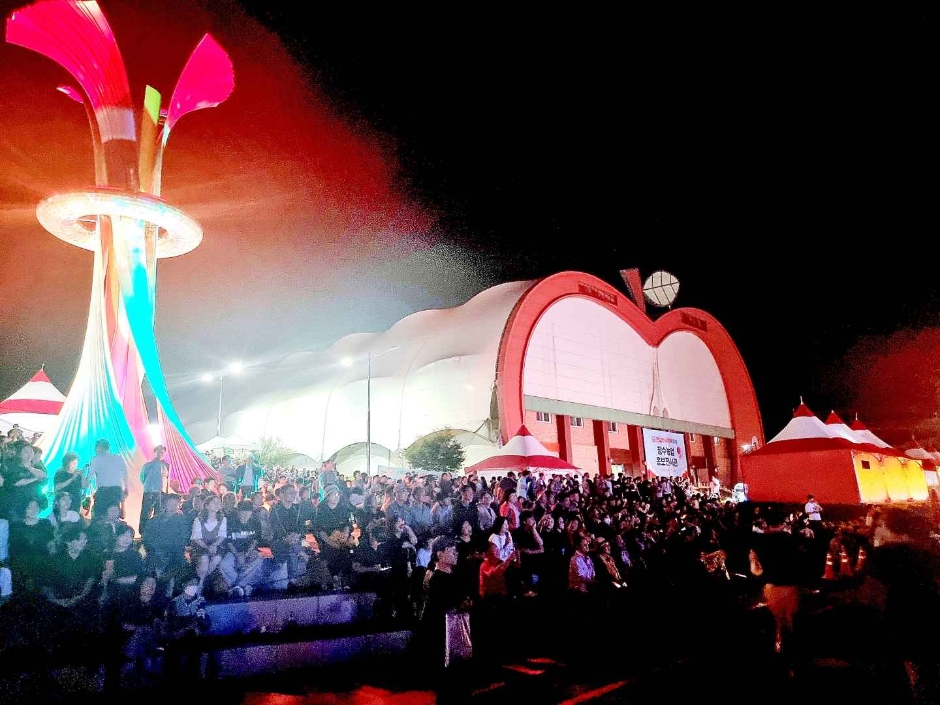
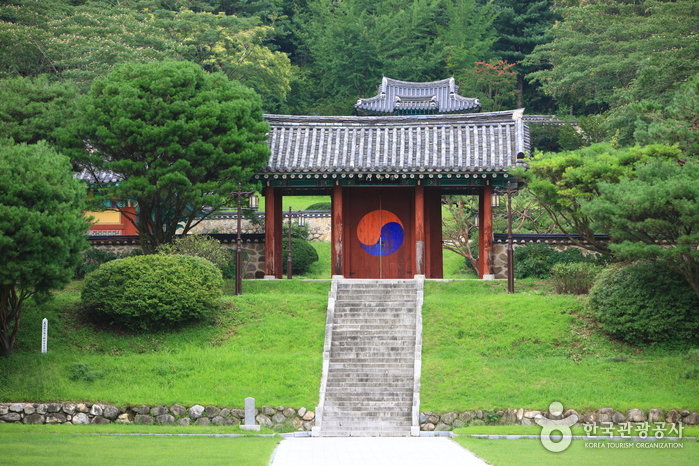

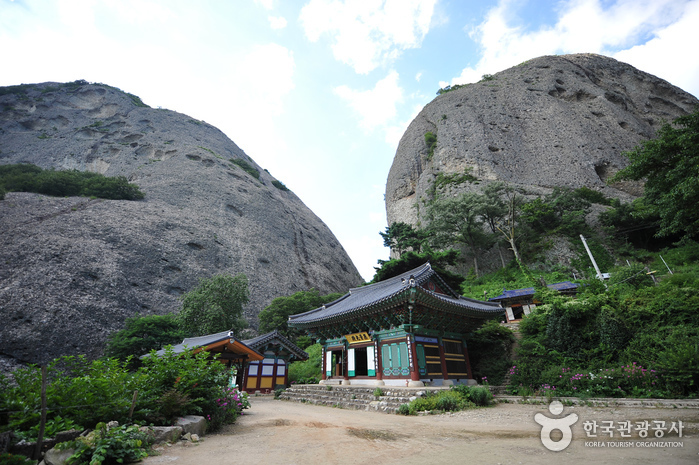
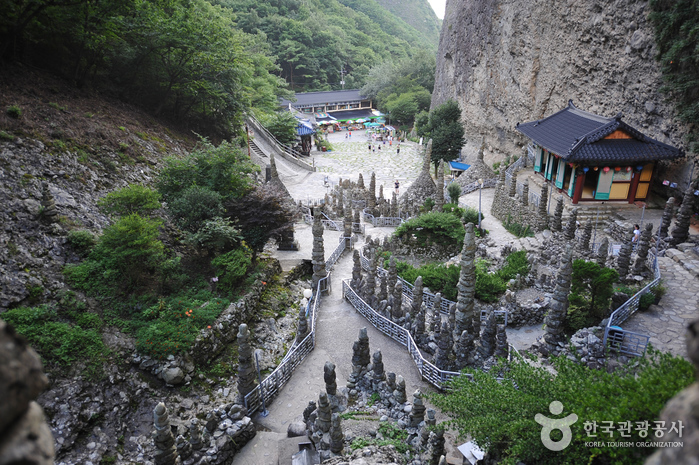
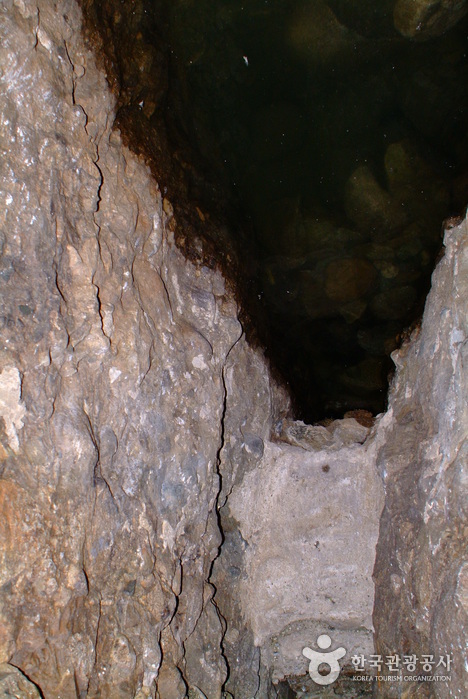
 English
English
 한국어
한국어 日本語
日本語 中文(简体)
中文(简体) Deutsch
Deutsch Français
Français Español
Español Русский
Русский